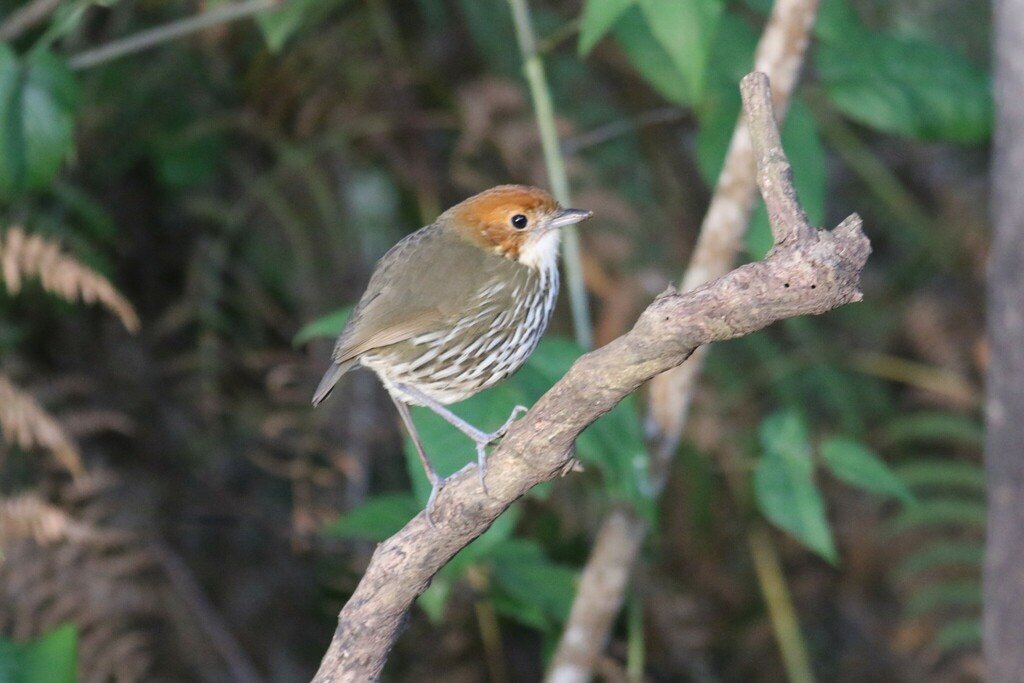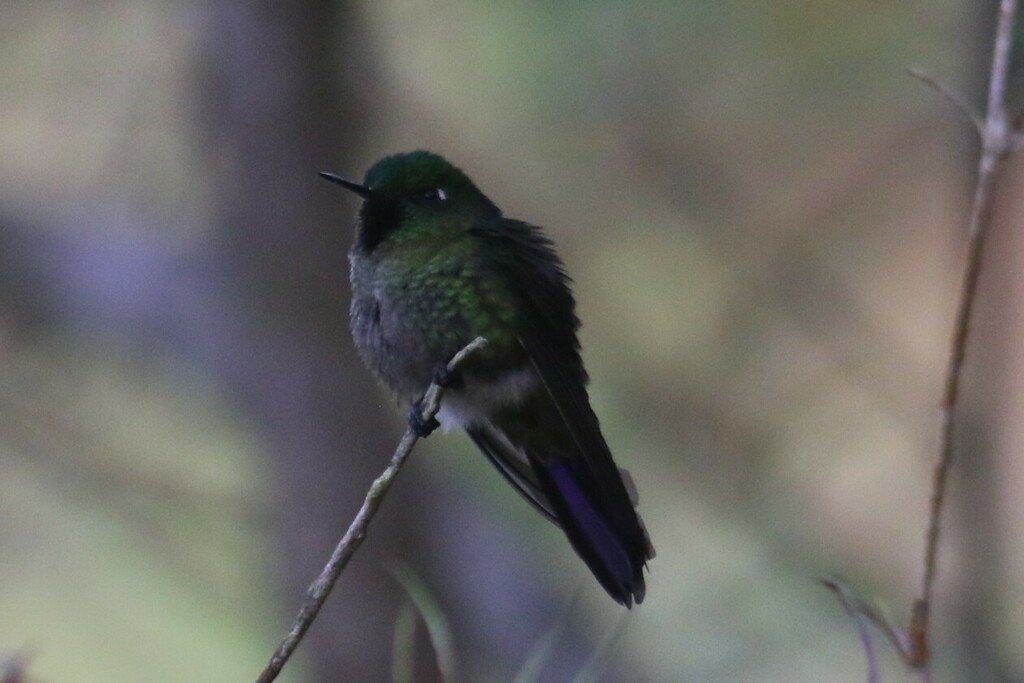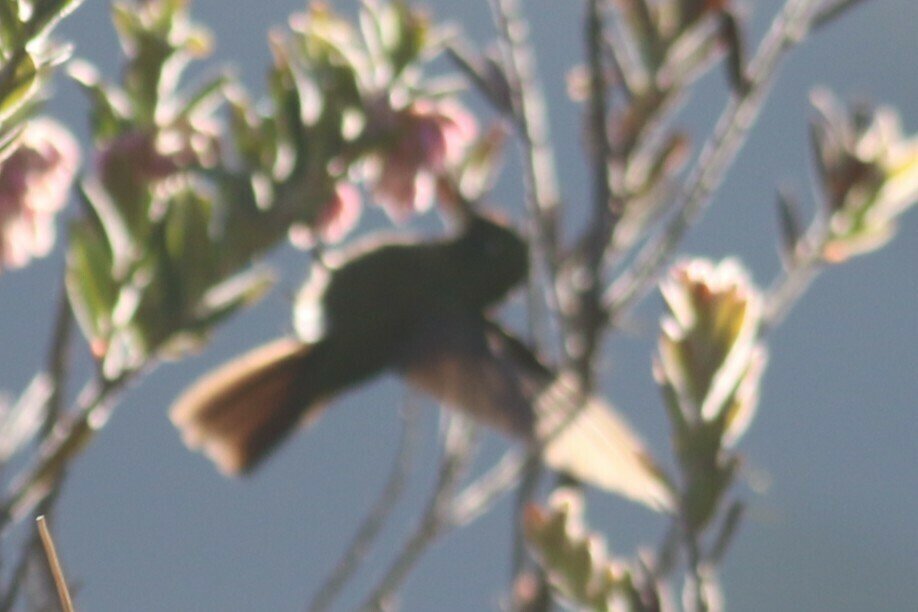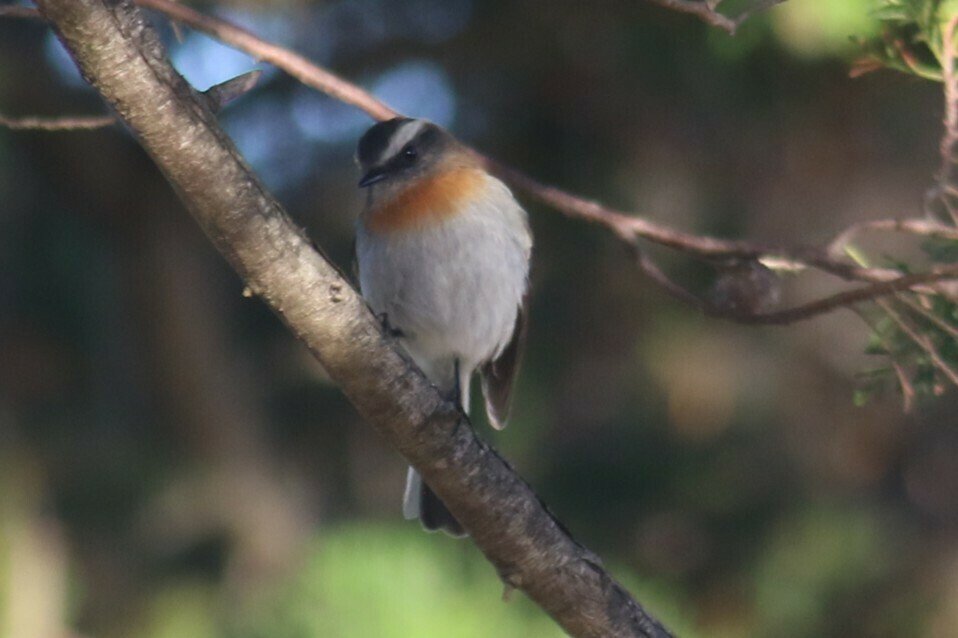Birding Colombia’s Perijá Mountains
The Perijá Mountains have aways been somewhat mythical to me. A small mountain range along the Venezuela-Colombia border that for decades was almost completely inaccessible to birders. Due to its relative isolation from the rest of the Andes, the Perijá mountain range is home to at least 5 endemic species of birds, with more potential splits in the future.
As we arrived in Manaure, a town about 1.5 hours from the Perijá ProAves Reserve, we revieved some troubling news. We had arranged ahead of time to be driven the rest of the way to the reserve in what we were told was a "special vehicle" that could handle the rough road up the mountain. This "special vehicle" ended up being a pair of rickety tuktuks, and our contact Oscar had just informed us that due to some extreme rain higher up the road, he wasn't sure if we'd be able to make the journey. Having no other option, we had to hope for the best as we loaded our bags and ourselves into the tuktuks and began the long ride up the mountain. The first few miles of the road were perfectly fine, even paved in some parts, but after about half an hour, the conditions rapidly deteriorated. As we hit the rougher sections of the road, it continued to rain harder and harder until it was almost impossible to see out of the front of the tuktuk. Despite my confidence in our driver, I was starting to feel a little worried. After another hour of being jostled about by the bumpy road, soaked by the torrential rain, and holding on for dear life, we finally made it to the reserve.
Immediately, I was greeted by several lifers. Longuemare's Sunangels swarmed the hummingbird feeders, with Black and Bluish Flowerpiercers trying to get a taste as well. I watched the feeders for only a few minutes before a Chestnut-crowned Antpitta appeared. With their long-legs, short tail, and overall round appearance, antpittas are one of my favorite bird families in South America, and it was an amazing experience to finally see one. As the sun slowly set over the Perijás, I prepared myself for an exhausting 3 days of hiking, birding, and naturalizing one of the most unique regions of Colombia.
Chestnut-crowned Antpitta (Grallaria ruficapilla)
Early wake-ups are an unfortunate reality of being a birder, and that day was no different. I reluctantly got out of bed at 4:45 in the morning to be ready for a long ascent to the higher elevations of the mountain range. The first 45 minutes of our walk were in almost total darkness, accompanied by nothing but the calls of Yellow-throated Toucans and Highland Tinamous echoing through the valleys of the Perijás. As the sun began to rise, we began to spot Blue-capped Tanagers, Tyrian Metaltails, and Rufous-collared Sparrows along the road, with Band-tailed Pigeons zooming by overhead. With top speeds nearing 60mph these pigeons are one of the fastest flying birds in the world, sometimes drawing comparisons to jet bombers due to the loud sounds produced while flying at top speed.
It wasn’t until we reached the páramo that we started to see some of the specialties of the Perijá region. Over the first hour and a half of our walk, we had been seeing many Tyrian Metaltails, a small, short-billed hummingbird that is quite common in mountainous regions from Venezuela all the way to Bolivia. Despite being such a common bird, we painstakingly examined each and every individual we saw, hoping to turn it into the rarer Perijá Metaltail. Overall, these birds look quite similar, with the main difference being the tail color. The more common Tyrian Metaltail has a bluish tail, while the Perijá Metailtail’s is more coppery colored. Needless to say, it can be quite annoying to differentiate these birds in the field. We finally got our eyes on a good candidate just after reaching the first stretch of páramo. Despite this bird being very uncooperative, never staying still for more than 2 seconds at a time, we were confident enough to call it a Perijá. With the first of the five endemic birds checked off the list, we were off to a hot start.
Tyrian Metaltail (top), Perija Metaltail (bottom)
These endemics weren’t the only targets however. With this being my first time really birding the Andes, pretty much every high elevation species was a lifer for me. Within my first few minutes in the páramo, I easily got my eyes on several Rufous-breasted Chat-Tyrants, a White-throated Tyrannulet, Rufous Spinetails, a Crimson-mantled Woodpecker, and much more. One of my favorite non-endemic lifers of the Perijá trip was the Red-crested Cotinga. Despite being one of the less showy cotingas in Colombia, Red-crested is one of my favorites. The subtle contrasts between the many shades of gray and black, along with the deep red crest and red eye make it such an interesting bird to observe.
Red-crested Cotinga (Ampelion rubrocristatus)
As we continued higher and higher into the mountains, we had two main targets. The Perijá Thistletail, and the excruciatingly difficult Perijá Starfrontlet. The starfrontlet is a gorgeous, long-billed hummingbird that can elude even the most experienced birders that visit the region. This difficult bird has only been observed around 100 times on ebird, and only once on iNaturalist. Compare that to a bird like the Mallard, with 18.3 million ebird observations and 617 thousand on iNat, and you can see how this bird might be tough to see. Despite waiting for over 45 minutes at what seemed like the perfect spot for this species, we came up empty handed and were forced to move on if we wanted to get the rest of our targets.
Unfortunately for us, one of our biggest targets, the Perijá Thistletail was only found along the highest portions of the road, and we had a lot more walking left to do. The birding along the road was much of the same. Rufous-breasted Chat-Tyrants and Rufous-collared Sparrows were by far the most common species we encountered along the road, with surprising numbers of Red-crested Cotingas regularly spotted perched on the very tops of the few trees that could survive this elevation. Despite the overall low bird diversity, we did encounter a few more lifers. We spotted several Streak-throated Bush-Tyrants, living up to their name by seemingly always being perched on the tops of large bushes. The repetitive song of the Andean Pygmy Owl was a welcome surprise around 10am, along with the distant calls of a Golden-headed Quetzal echoing through the mountains.
Rufous-breasted Chat-Tyrant (Ochthoeca rufipectoralis)
Finally, around midday, we encountered one of our last bird targets of the day. As we were scanning the cliffs for what would be my lifer Andean Condor, we noticed a small bird darting around in a bush less than 100 feet down the hillside, A Perijá Thistletail! Despite being an incredibly boring bird, almost entirely made up of dull grays and browns, I was elated to finally be able to observe this amazing endemic species. As we decided what to do next, I opened up google maps to see how close we were to spots for any of our other targets. We had been so engrossed in the amazing birding of the Perijás, we hadn’t realized that we were less than half a mile from the Venezuelan border! Despite the increase in safety over the last several years, getting too close to the border was not a risk we wanted to take (areas within 12 miles of the border are considered a “Level 4: Do Not Travel” zone by many countries), so we decided to turn back.
After about an hour of slowly making our way down the mountain, taking time to stop and photograph interesting plants and insects, we began to discuss our strategy to check off the final target of the day. The Perijá Starfrontlet had already eluded us in the morning, and we were determined not to let it happen again. However, after striking out at our first two pins for the species, I had started to lose a little hope. About halfway down the road, we decided to take a break and enjoy some of the amazing food prepared for us by the staff at the Perijá ProAves Reserve. It was during this break that we noticed a faint buzzing sound coming from the flowery bushes across the road from us. Expecting it to be just another Tyrian Metailtail, or Mountain Velvetbreast, I wasn’t too interested at first. Despite my low hopes, I got up and began looking around for this mystery hummingbird. To my complete shock, I looked down into an open hole in the bush, and looking back at me was an astonishingly beautiful male Perijá Starfrontlet. At the beginning of this trip, I wasnt’t hopeful that I would be able to even see this species, let alone get one of the best looks a person could ask for. The Starfrontlet didn’t hang around long, I watched this amazing bird for about 10 seconds, took a few quick photos, and it disappeared. Despite such a short encounter, I couldn’t ask for any better way to end a perfect day in the páramo of Northern Colombia
Perija Starfrontlet (Coeligena consita)





